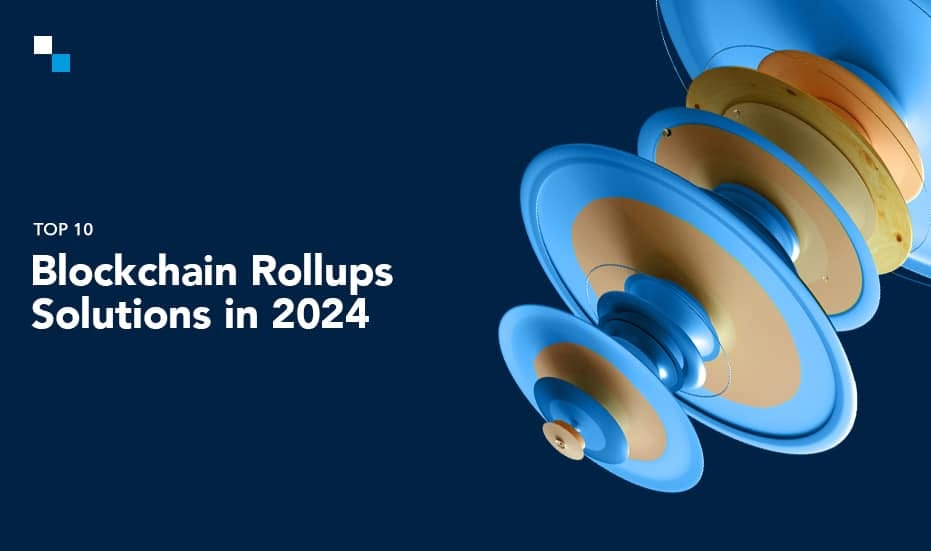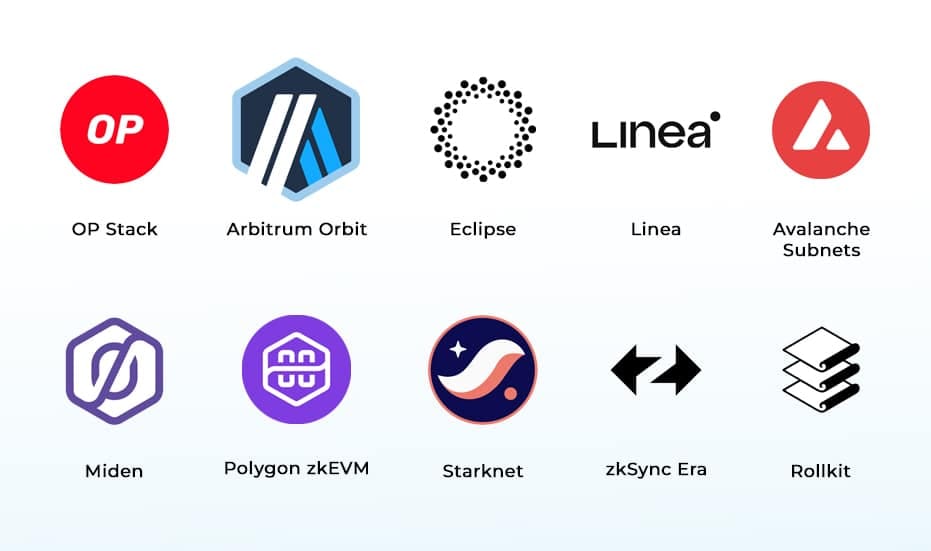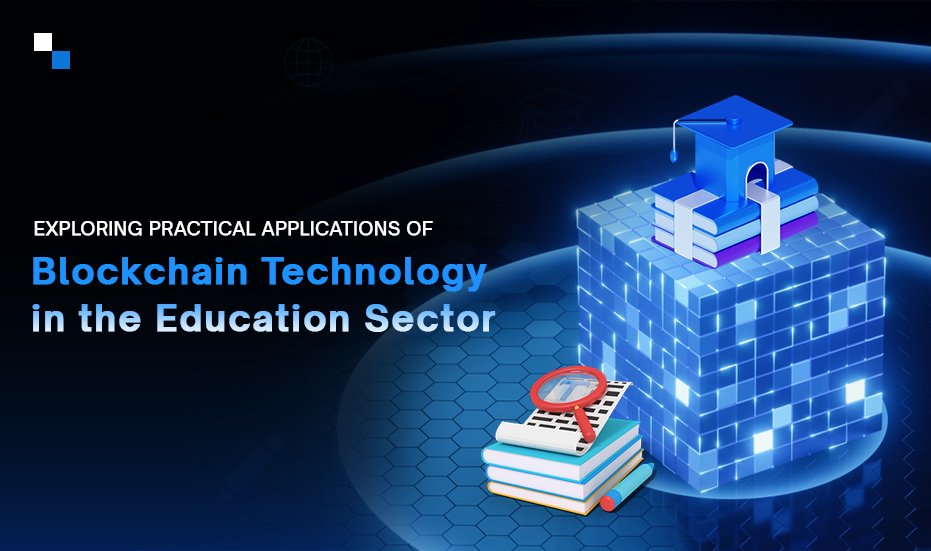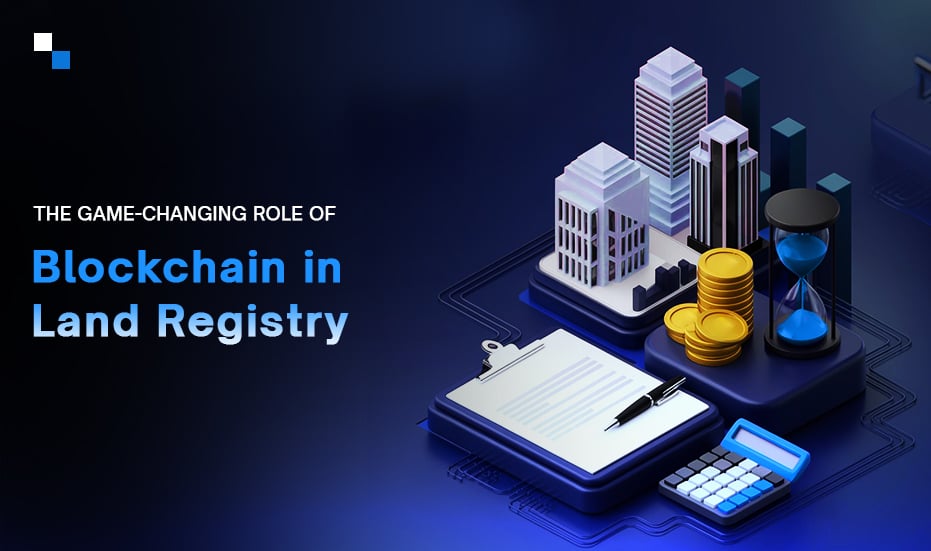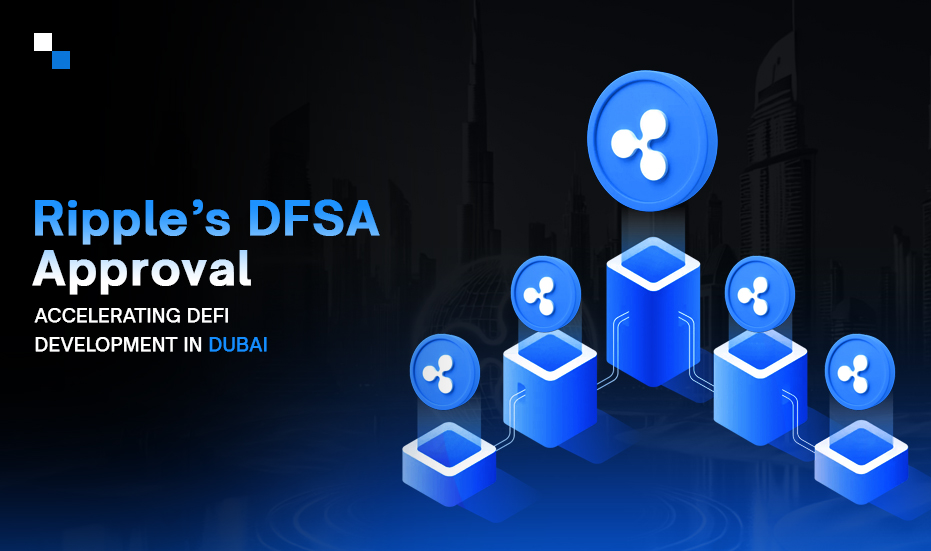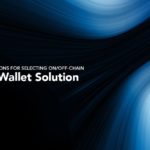
How to Choose Suitable On/Off-Chain Crypto Wallet Solution & Evaluate Its Cost
May 29, 2024
How to Make Profits Using Auto Trading Bot for Market Analysis
May 29, 2024The transformative promise of blockchain lies in its ability to facilitate secure and transparent transactions. Yet, scalability issues often prevent businesses from fully leveraging this technology. Imagine a bustling highway clogged with traffic. That’s what Ethereum, the leading blockchain platform, resembles during peak usage periods. Transactions become slow and expensive that deters both users and businesses from fully embracing the potential of Web3 applications. This is where Blockchain rollups come into the picture.
Rollups act as express lanes, bundle multiple transactions off-chain for faster speeds and lower costs, and process them in batches. This significantly reduces the load on the main blockchain while ensuring the security of the transactions is anchored to Layer 1. But with a burgeoning landscape of Rollup as a service provider and EVM as well as non-EVM compatible Rollup frameworks, choosing an ideal solution can be daunting.
This blog gives a comprehensive overview of the top 10 blockchain rollups solutions in 2024 and things to consider before choosing an optimal one for your business. Before moving any further, let’s understand how Blockchain rollups are paving the way for mass Blockchain adoption.
Table of Contents
The Role of Blockchain Rollups in Catalyzing Mass Adoption
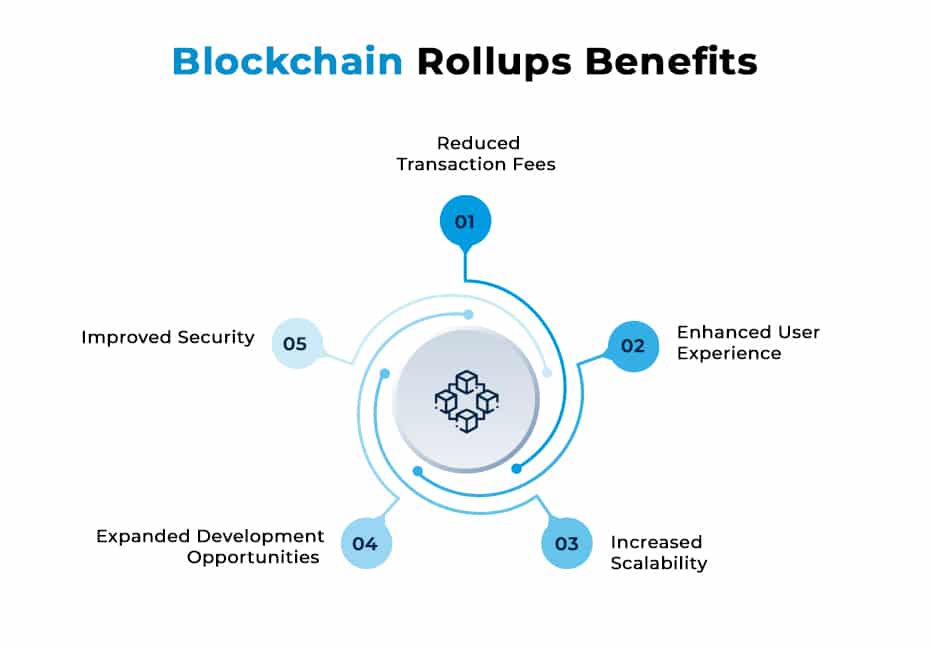
The advantages of Blockchain rollups extend far beyond just faster transactions. Here’s how rollups will empower businesses in the Web3 landscape:
- Reduced Transaction Fees
High gas fees on Layer 1 currently make dApps cost-prohibitive for many users. Rollups drastically lower these fees while opening the door to a wider user base and increased engagement with your dApp.
- Enhanced User Experience
Faster transaction times translate to a smoother user experience for your customers. This is crucial for fostering trust and loyalty on your dApp platform.
- Increased Scalability
With Blockchain rollups, your dApp can scale seamlessly to accommodate a growing user base without compromising performance. This future-proofs your business for long-term success.
- Expanded Development Opportunities
Rollups unlock a wider range of possibilities for developers. Complex applications with high transaction volumes become feasible, accelerating innovation and pushing the boundaries of what’s possible in Web3.
- Improved Security
Blockchain Rollups inherit the security of established Layer 1 blockchains like Ethereum, providing a secure environment for businesses and users.
Things to Consider Before Choosing an Ideal Blockchain Rollup Solution
Understand Your Project Requirements
Before embarking on your rollup journey, a thorough understanding of your project’s requirements is paramount. Here are some key aspects to consider:
- Transaction Volume and Speed: Will your dApp involve high-frequency transactions? Do you require near-instantaneous confirmations for a seamless user experience? Different Blockchain rollups solutions offer varying levels of scalability and throughput.
- Security Model: Optimistic rollups rely on fraud proofs, while ZK-rollups offer on-chain verification. The choice between these models depends on your prioritization of security versus transaction speed.
- Smart Contract Compatibility: Will you be leveraging existing smart contracts built for EVM compatibility? Some rollups may require modifications to existing smart contracts that impact development timelines.
- Decentralization Level: The level of decentralization offered by a rollup solution can influence factors like censorship resistance and community governance. Assess your risk tolerance and desired level of control.
Evaluate Rollup Options
Once you have a clear picture of your project’s needs, delve deeper into the functionalities of prominent Blockchain rollups solutions. Here are some key aspects to compare:
- Technical Maturity: Consider the development stage of the chosen Blockchain rollup. A mature solution offers greater stability and proven security, while newer rollups might boast innovative features but lack a track record.
- Ecosystem and Community: A robust ecosystem with a thriving developer community provides valuable resources, tools, and support. Choose a rollup with a strong foundation for future growth.
- Interoperability: Evaluate the rollup’s ability to interact with other blockchains and dApps. Interoperability is crucial for fostering a connected Web3 landscape and expanding your reach.
- Team and Backing: Research the team behind the Blockchain rollup solution and the project’s backing. A strong team with a proven track record and reputable backers instills confidence in the long-term viability of the solution.
Consider Future-Proofing
The Web3 landscape is constantly evolving. Choose a Blockchain rollup solution built with scalability and future upgrades in mind. Consider solutions with active research and development focused on continuous improvement and integration with emerging technologies.

Blockchain Rollups: Top 10 Layer-2 Solutions
1. OP Stack
The OP Stack is a standardized, open-source rollup development framework that powers Optimism, a project developed by the Optimism Collective. It comprises various software components forming the backbone of Optimism, designed as a public good for Ethereum and Optimism ecosystems.
Currently implemented in the Optimism Mainnet, the OP Stack will also support the upcoming Optimism Superchain—a network of interoperable Layer-2 chains sharing security and communication layers.
The Bedrock release of the OP Stack simplifies the deployment of production-quality Optimistic rollup blockchains while facilitating the creation of secure L2 blockchains within the Superchain ecosystem. The below-listed are some primary components of OP Stack:
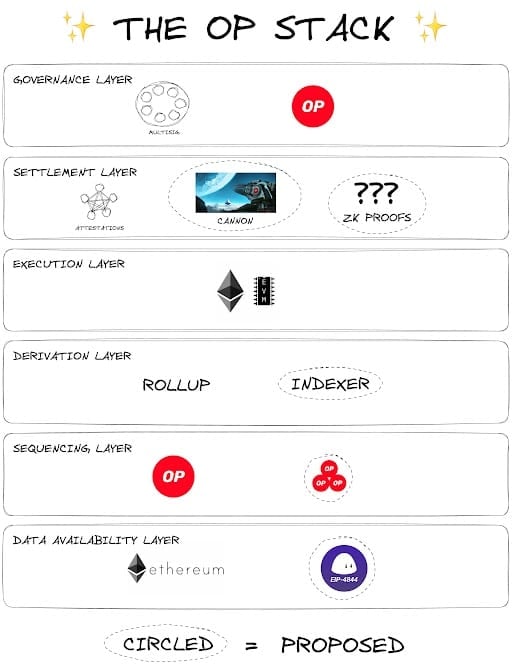
Img src: https://shorturl.at/8DxFe
Data Availability Layer: Publishes raw inputs for OP Stack chain, crucial for ensuring data retrievability and security in chain synchronization.
Sequencing Layer: Collects and publishes user transactions to the data availability layer, with support for customizable future sequencing mechanisms.
Derivation Layer: Processes raw data from the data availability layer into inputs for the execution layer, ensuring correct data parsing.
Execution Layer: Defines state structure and transitions using inputs from the derivation layer via the Engine API.
Settlement Layer: Establishes a view of OP Stack chain state on external blockchains, enabling state-based decisions for external parties.
Governance Layer: Manages configuration, upgrades, and design decisions, affecting multiple OP Stack layers and external chains.
2. Arbitrum Orbit
Arbitrum Orbit offers a permissionless way to launch fully customizable L2/L3 chains. Leveraging the Arbitrum Nitro Tech Stack, Orbit chains benefit from cutting-edge blockchain scaling technology, including future upgrades like performance optimizations and permissionless validation.
Arbitrum Orbit enables extensive customization and allows developers to tailor chains to project-specific needs, including gas tokens, privacy settings, throughput, governance, and data availability layers. This flexibility makes Orbit ideal for Layer 2 scaling solutions, providing a robust framework for innovative blockchain applications.
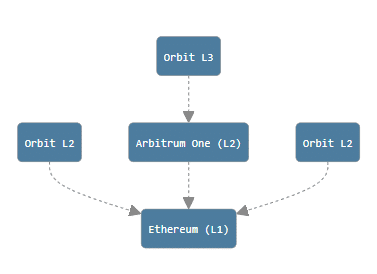
Img src: https://shorturl.at/O4qLD
Orbit chains ensure complete ownership and decentralization, giving builders control over validation and dependencies while benefiting from Ethereum’s security. These chains can settle directly to Ethereum as L2 or to any Ethereum L2, such as Arbitrum One, as L3 chains, acting as self-managed priority lanes with enhanced capacity.
By leveraging both the Rollup and AnyTrust protocols, Arbitrum Orbit addresses Ethereum’s network congestion and cost issues. Arbitrum One uses the Rollup protocol for high security, while Arbitrum Nova employs the AnyTrust protocol for faster, cost-efficient settlements.
3. Eclipse
Eclipse is Ethereum’s fastest layer 2 solution that leverages SVM(Solana Virtual Machine) to power a new architecture tailored for the next generation of decentralized applications. It offers unmatched speeds, superior security, and scalability for powerful applications and provides developers with dedicated throughput without compromising on performance. By utilizing the Solana Virtual Machine, Eclipse enables optimized parallel execution capable of handling massive scale efficiently.
Eclipse fosters composability across various applications to simplify the maintenance of accounts across multiple chains and provide a seamless user experience without the need to worry about gas tokens. Unlike traditional rollups that handle everything (data availability, execution, settlement) on a single chain, Eclipse separates these functionalities into distinct layers. This allows for a more flexible and potentially more scalable architecture.

Img Src: https://shorturl.at/hjBdL
Scalability and verifiability are central to Eclipse’s design, with Celestia’s data availability sampling (DAS) light node support allowing users to independently verify the availability of Eclipse block data. This feature not only enhances security but also contributes to securely scaling the entire network.
Eclipse is backed by prominent investors such as Polychain, Tribe Capital, Robot Ventures, DBA, Accel, and Galileo, among others, ensuring strong financial and strategic support. Additionally, it enjoys robust support from key players in the blockchain ecosystem, including Celestia, EigenLayer, RISC Zero, and the Solana Foundation.
4. Linea
Linea, developed by ConsenSys, is an advanced Zk-rollup solution designed to enhance the Ethereum ecosystem. As a Layer 2 scaling solution, Linea utilizes zero-knowledge proofs to offer both privacy and throughput enhancements without sacrificing EVM compatibility. This compatibility ensures that developers can seamlessly transition existing dapps or create new ones without the need to alter underlying code.
The platform is distinguished by its developer-friendly approach and provides ease of use that does not require in-depth knowledge of zero-knowledge technology. Linea’s robust architecture incorporates quantum-resistant lattice-based cryptography, which sets it apart from other EVM rollup solutions that might rely on zk-SNARKs with a trusted setup.
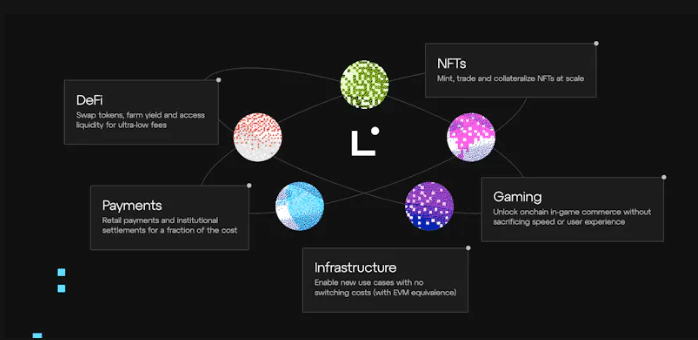
Img Src: https://shorturl.at/lb1jG
Security is a cornerstone of Linea’s offerings, highlighted by its extensive partnerships with over twenty security firms specializing in everything from threat prevention to real-time monitoring and post-incident analysis. These collaborations aim to establish Linea as the most secure chain for engaging with web3 applications.
Moreover, Linea’s zk-SNARKs technology powers its rollups, providing the dual benefits of scalability and enhanced privacy by enabling transactions to be verified without full data disclosure. This technology underpins the scalability solutions Linea offers, allowing for greater transaction throughput and reduced fees compared to the Ethereum mainnet.
5. Avalanche Subnets
Avalanche Subnets provide a highly customizable framework for blockchain rollups within the Avalanche ecosystem. Each subnet operates as a sovereign network with its own rules for membership and token economics, validated by a dynamic subset of Avalanche validators achieving consensus on one or more blockchains.
The primary network of Avalanche is a special Subnet that includes three core blockchains: the Platform Chain (P-Chain), the Contract Chain (C-Chain), and the Exchange Chain (X-Chain). This configuration showcases how Subnets can independently manage their execution logic, fee structures, state maintenance, networking, and security.
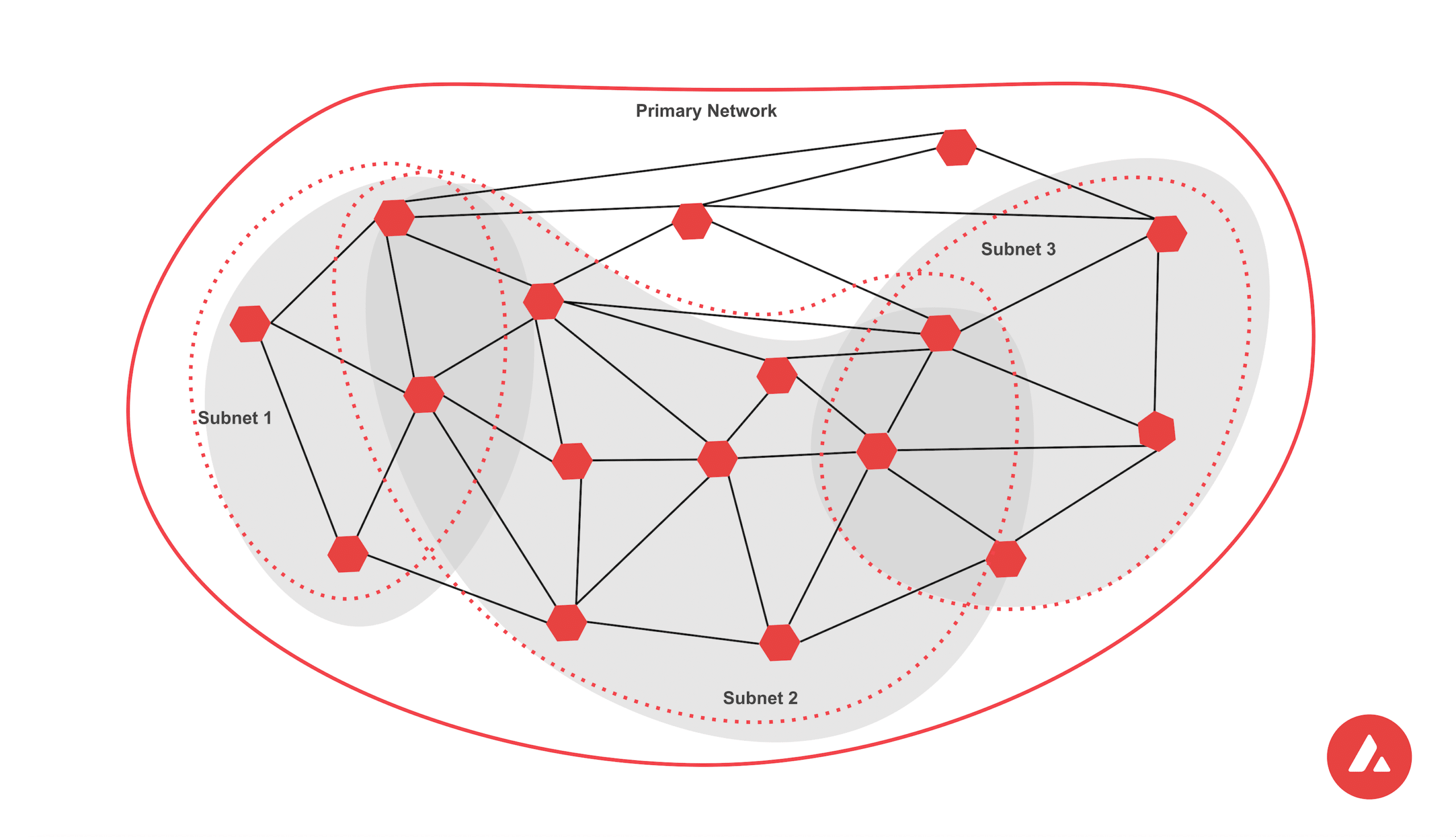
Img Src: https://shorturl.at/M6WU2
Native interoperability is facilitated by Avalanche Warp Messaging, enabling seamless communication between different Subnets. Compliance is simplified with Avalanche’s Subnet architecture, allowing Subnet creators to enforce specific validator requirements like geographic location, KYC/AML checks, and licensing.
Organizations can create private Subnets where blockchain contents are visible only to pre-approved validators, ensuring data confidentiality and meeting privacy concerns. Validator sovereignty allows validators to select which blockchains to validate, reducing computational burdens and enhancing network efficiency.
6. Miden
Polygon Miden is a modular execution layer that enhances Ethereum’s capabilities by leveraging advanced features such as parallel transaction execution and client-side proving. As a top Zk-rollup solution for private, high-throughput applications, Miden allows developers to create innovative, scalable dApps for DeFi, real-world assets, and autonomous worlds using popular programming languages like Rust and TypeScript.
Miden’s architecture supports the development of novel applications that are computationally intensive, data-heavy, or require high levels of privacy. By using an actor-based model for concurrent transaction execution, Miden ensures high throughput, making it suitable for complex applications such as order-book exchanges and advanced wallets with private asset management.
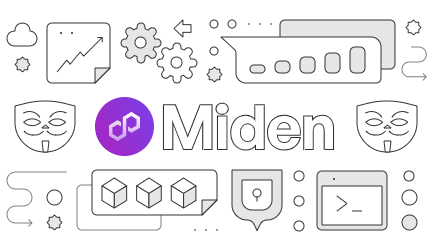
Img Src: https://shorturl.at/McSVP
One of the key features of Polygon Miden is its robust asset safety. Through account abstraction and the Move programming language, Miden provides a secure environment for asset management. This includes functionalities like changing wallet keys and recovering wallets, ensuring users retain sovereignty over their data.
Additionally, Miden’s privacy features allow users to control which data is stored on the network and what remains private, enabling the creation of wallets for founders and liquidity providers with partially hidden assets.
7. Polygon zkEVM
Polygon zkEVM beta is a leading ZK scaling solution equivalent to the Ethereum Virtual Machine. It enables the vast majority of existing smart contracts, developer tools, and wallets to function seamlessly while offering an L2 network that harnesses zero-knowledge proofs for cost reduction and enhanced performance. As a top Zk-rollup scaling solution, Polygon zkEVM significantly lowers transaction costs by optimizing the zkSNARK footprint size in L1, thus improving the overall user experience.
The high performance of Polygon zkEVM is achieved through fast network finality, supported by frequent validity proofs and Polygon Zero technology, which boasts the fastest ZK proof in the world. The use of recursive STARK technology ensures extreme scalability and allows developers to create a wide range of decentralized applications for varied user experiences without needing to rewrite code, as it maintains EVM equivalence.
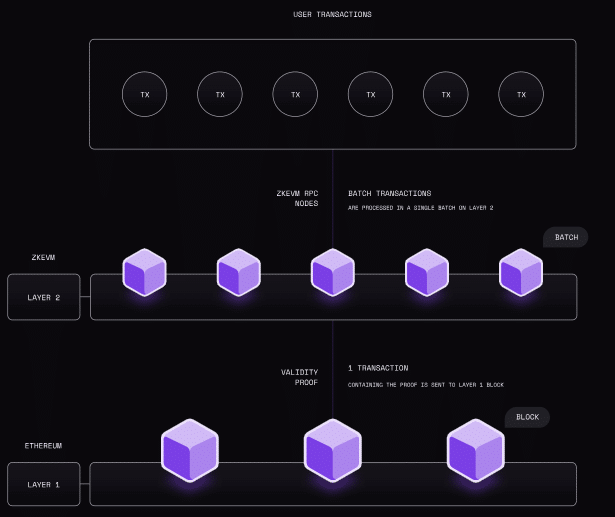
Img Src: https://shorturl.at/RsuCB
Security is a paramount feature of Polygon zkEVM, as it inherits the security of Ethereum L1 while providing additional benefits through L2 batching for scaling. ZK proofs guarantee transaction validity and protect user funds, ensuring the integrity of stored information.
Developers can deploy their existing contracts, and users can benefit from lower gas costs by transacting on Polygon zkEVM. This ZK-based crypto solution offers compatibility and scalability without compromising on security, making it an ideal choice for Ethereum Zk-rollup projects and Layer 2 scaling solutions.
8. Starknet
Starknet is a permissionless Validity-Rollup, also known as a zero-knowledge rollup for Ethereum, designed to enhance dApp scalability without compromising Ethereum’s composability and security. Starknet leverages the STARK cryptographic proof system to enable secure, low-cost transactions and high performance. Starknet’s architecture relies heavily on two core components: the Starknet Sequencer and the Starknet Prover.
The Sequencer oversees transaction validation and execution, grouping transactions and ensuring that only successful ones are included in a block. This mechanism allows Starknet sequencers to handle more transactions per second than Ethereum nodes, enhancing throughput. The Prover generates a STARK proof, ensuring the mathematical validity of transactions. It creates an Execution Trace and State Diff, which document the transaction process and system state changes.
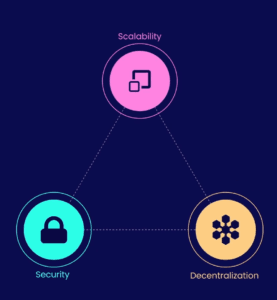
Img Src: https://shorturl.at/sEMz2
Starknet offers a superior user experience through Native Account Abstraction. All accounts are smart accounts, customizable by developers to enhance flexibility and security. This feature allows developers to create more sophisticated and user-friendly applications.
Starknet’s Developer Hub supports a thriving community with resources and manuals, fostering innovation and facilitating the development of complex dApps. Utilizing Cairo, Starknet’s native smart contract language, developers can implement any business logic, unleashing their creativity and pushing the boundaries of what is possible on Starknet.
9. zkSync Era
zkSync Era offers a Blockchain rollup solution with full EVM compatibility for Ethereum, providing developers with the advantages of significantly reduced gas fees and higher transaction throughput, without compromising on Ethereum’s security and decentralization. This solution marks a substantial advancement in Layer 2 technologies and enables seamless porting of EVM dApps to zkSync Era.
As an EVM-compatible Zk-rollup, zkSync Era allows developers to effortlessly migrate their existing Ethereum smart contracts without major modifications. This compatibility ensures a smooth transition and fosters broader adoption within the Ethereum developer community.
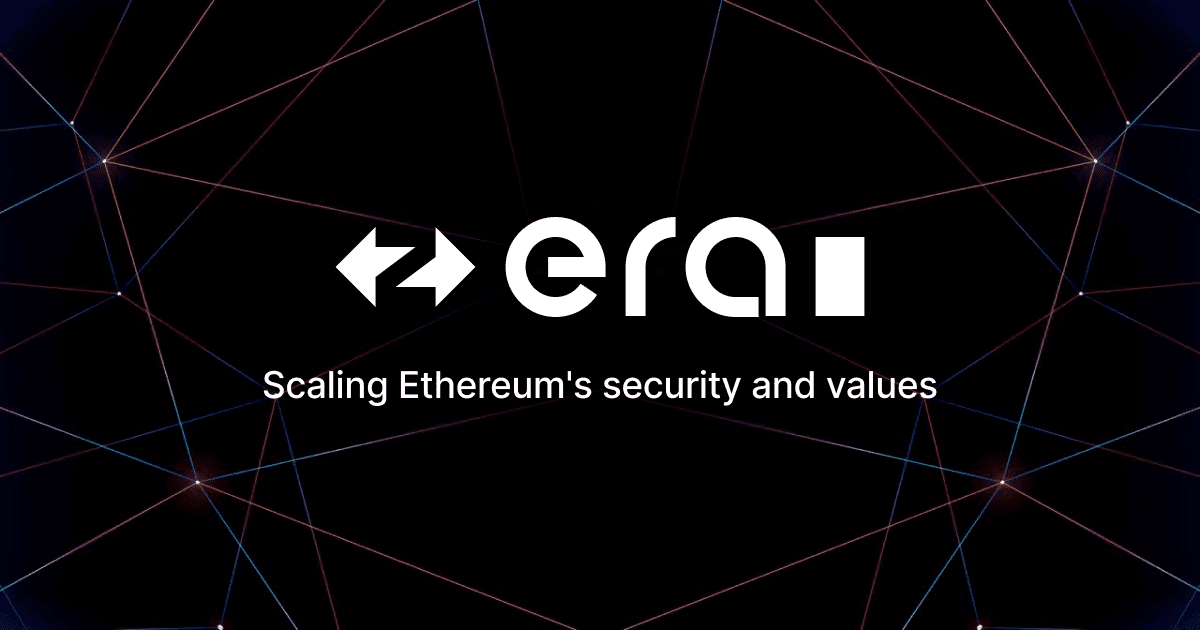
Img Src: https://shorturl.at/yzLYn
The platform’s commitment to decentralization is evident in its alignment with open-source principles and a roadmap aimed at fully decentralizing the sequencer and proof generation processes. This approach eliminates the need for a trusted third party, further enhancing the security and trustworthiness of the network.
zkSync Era’s future-proof design promises continuous improvements without requiring changes to existing code. Innovations such as advanced prover technology, integration of LLVM-enabled modern programming languages, and other cutting-edge features like ZK Chains, Hyperbridges, and ZK Stack are set to enhance the platform’s capabilities over time.
10. Rollkit
Rollkit is a sovereign rollup framework designed to revolutionize the deployment of rollups within the modular stack while facilitating rapid experimentation and innovation. This framework enables developers to deploy new rollup chains as easily as deploying smart contracts, thus minimizing traditional trade-offs associated with smart contracts or new layer 1 deployment.
One of Rollkit’s core strengths lies in its ability to provide shared security. By posting blocks to a data availability layer, rollups inherit the security of that layer. This setup reduces trust assumptions on rollup sequencers, as full nodes can download and verify transactions in sequencer-posted blocks.
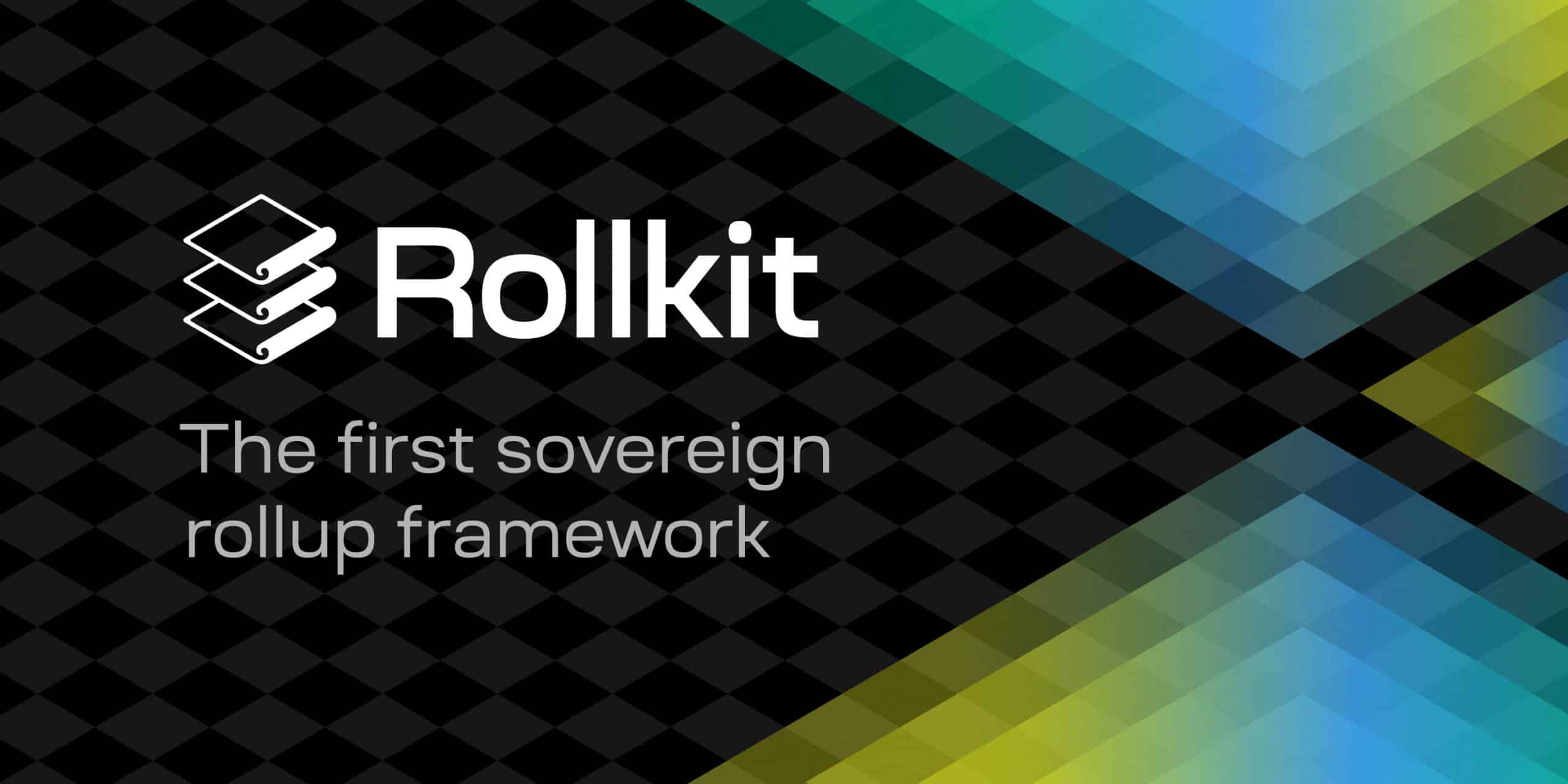
Img Src: https://shorturl.at/BixLg
Scalability is another significant advantage of Rollkit. By deploying rollups on specialized data availability layers such as Celestia, Rollkit leverages the inherent scalability of these layers. Off-chain execution of rollup transactions ensures dedicated computational resources for each rollup, avoiding competition for resources with other applications.
The customizability of Rollkit is achieved through its open-source modular framework, which allows developers to tailor the four main components: data availability layers, execution environments, proof systems, and sequencer schemes. This modularity enables the creation of bespoke rollups that meet specific requirements.

Conclusion
To conclude, selecting the optimal rollup solution for your business requires careful consideration of your project’s needs and the diverse landscape of Blockchain rollups options. By prioritizing your requirements, meticulously evaluating available solutions, and adopting a future-proof approach, you can pave the way for a successful Web3 venture.
Remember, the right rollup solution can be the catalyst that propels your business to the forefront of the decentralized revolution. With faster transactions, lower fees, and more scalable infrastructure, Blockchain rollups solutions will pave the way for widespread adoption and create a fertile ground for businesses to thrive in the decentralized future.
Antier stands at the forefront of blockchain innovation as a premier “rollup as a service provider. With deep-rooted expertise in blockchain technology, Antier specializes in offering advanced Blockchain rollups solutions that significantly enhance transaction throughput, reduce costs, and ensure robust security. By leveraging the latest advancements in rollup technology, Antier empowers businesses to overcome traditional scalability challenges and achieve optimal efficiency. Feel free to get in touch with our experts for more details.
